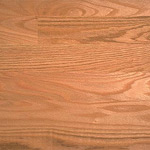For a quicker response, please send all inquiries
via info@canfloor.com or
text to
416-735-0075.
| Monday - Friday | 10:00 am - 7:00 pm |
| Saturday & Sunday | 10:30 am - 4:00 pm |

Scientific Name:Quercus rubra
Other Names and Species:Variations on the name for American red oak are numerous and include the following: Black Oak, Buck Oak, Canadian Red Oak, Common Red Oak, Gray Oak, Eastern Red Oak, Leopard Oak, Maine Red Oak, Mountain Med Oak, Northern Red Oak, Spanish Oak, Spotted Oak, Southern Red Oak, Swamp Red Oak, Water Oak
Origin:The commercial domestic species of red and white oak are widely distributed throughout the United States.
Appearance:Depending on whether the wood is plainsawn, riftsawn, or quartersawn, the grain of both red and white oak can have a plumed or flared appearance, a lighter grain pattern with low figuring, or a "flake" pattern that is referred to as "tiger rays" or "butterflies." Red oak boards can show a pronounced variation in appearance, depending on subspecies group, origin, growing season, and other factors; white oak, however, shows much less variation.
Properties:White oak is slightly harder than red oak, and also more durable. However, both types are notably stiff and dense, have high shock resistance, and resist wear. Because of the high concentration of tannic acid in white oak, it is particularly resistant to fungi and insects.
Workability:Both red and white oak have good resistance to splitting and excellent holding ability. Red oak sands better than white; by contrast, white oak has better machining qualities. Because of its relatively high porosity and low concentration of tannin, red oak works better for bleached floors than white oak, which can turn green or brown when the surface comes in contact with bleach or water-based finishes.
Principal Uses:Oak is practically synonymous with high-quality, durable, and distinctively attractive wood flooring. In addition, it is widely used in ship building, furniture and veneers, kegs and casks, truck and trailer beds, caskets, paneling, and mining timbers. Oak also makes a nice-burning fuel wood, and it yields tannin for the formulation of dyes.
